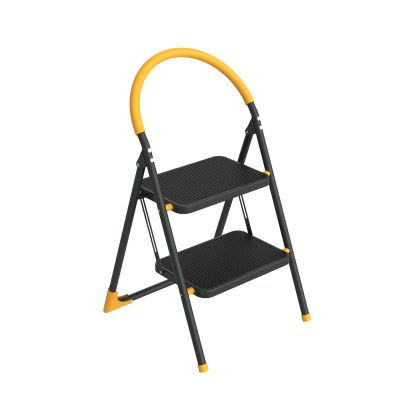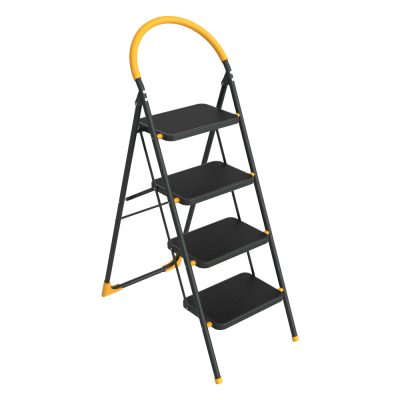Household ladders are not just tools; they are gateways to accomplishing tasks that require elevation. From routine maintenance to occasional repairs, these fixtures are essential in any household. In this comprehensive guide, we’ll delve into the intricacies of household ladders, exploring their types, features, practical applications, and crucial safety protocols, providing both professional insights and accessible advice for homeowners.
Introduction to Household Ladders:
In the realm of home maintenance and improvement, household ladders stand as stalwart companions, enabling access to elevated areas with ease and safety. These ladders come in various shapes and sizes, each tailored to specific tasks and environments. Understanding their nuances is fundamental for selecting the appropriate ladder for the job at hand.
Types of Household Ladders:
Step Ladders: Step ladders are ubiquitous in households, featuring a self-supporting A-frame design with evenly spaced steps on one side. They are ideal for indoor tasks such as changing light bulbs, accessing high shelves, or painting walls. Look for step ladders with features like non-slip steps and a sturdy frame for enhanced stability and safety.
Extension Ladders: Extension ladders are versatile tools designed for reaching greater heights, both indoors and outdoors. They consist of two or more sections that extend or telescope for adjustable height. Extension ladders are suitable for tasks such as cleaning gutters, trimming trees, or accessing roofs. Opt for models with locking mechanisms and anti-slip feet for added stability and security.
Platform Ladders: Platform ladders feature a broad, flat platform at the top, offering a stable surface for standing or working. They are commonly used for tasks that require extended periods of standing, such as painting ceilings, installing light fixtures, or reaching high cabinets. Choose platform ladders with a wide base and handrails for increased stability and comfort during use.
Practical Applications:
Household ladders find numerous practical applications in everyday life, including:
Changing light bulbs and smoke alarm batteries
Dusting ceiling fans and light fixtures
Retrieving items from high shelves or cabinets
Hanging curtains, artwork, or decorations
Cleaning windows, gutters, or vents
Painting walls, ceilings, or exterior surfaces
Conducting minor repairs or installations
Safety Considerations:
Safety should always be a primary concern when using household ladders. Here are some essential safety guidelines to follow:
Inspect the ladder before each use for any signs of damage or wear.
Place the ladder on a level and stable surface, free from obstructions or hazards.
Maintain three points of contact (two feet and one hand) when climbing or descending.
Avoid overreaching or leaning to one side while on the ladder.
Do not exceed the maximum weight capacity specified by the manufacturer.
Always follow the ladder’s usage instructions and warning labels diligently.
Conclusion:
In conclusion, household ladders are indispensable assets for homeowners, facilitating a myriad of tasks that require elevation. By understanding the different types of household ladders, their features, practical applications, and safety protocols, homeowners can select the appropriate ladder for their specific needs and ensure safe and successful outcomes. With the right ladder at hand, navigating heights becomes a manageable and efficient endeavor, empowering homeowners to maintain and improve their living spaces with confidence and ease.







